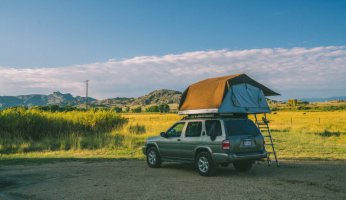How to Deal with Knee Pain while Hiking?
 How to Deal with Knee Pain while Hiking?
gearweare.net
How to Deal with Knee Pain while Hiking?
gearweare.net
Knee pain. This is one of the most typical things an avid hiker will experience after years of trekking the trails. This is not something you can avoid. As we age, so does our bodies’ ability to recover and recuperate. Commonly diagnosed as Chondromalacia, Patellofemoral Syndrome of Stress is a real thing. Commonly named “runners’ knee” any inclined elevation is going to be your worst enemy. Here we’re going to talk about prevention and ways to assist the unavoidable. Read on for our quick pro tips on how to deal with knee pain when on a hike.
Table of Contents
Where does Knee Pain Come from?
Knee pain can be the outcome of many types of issues. From strains and sprains to cartilage tears, some problems take some time to heal, and others can lead to chronic pain. Any item gone untreated or handled incorrectly will cause you to pain either way. Regularly exercising along with a healthy diet are the two best things that you can do. Preventative maintenance is key to your body’s health.
The most common issue when your experiencing pain is inflammation. This is a natural part of being a human. The healing process for this type of problem is time and care. Eating healthy and controlling your diet is the most important thing you can do.
Consuming the proper foods that contain the properties that help fight inflammation is vital — eating your greens and veggies, along with an assortment of nuts and fruits. If you are on a multi-day hike you can take a look at our list of anti-inflammatory superfoods.
Tips on Handling the Knee Pain
1. Proper Exercise
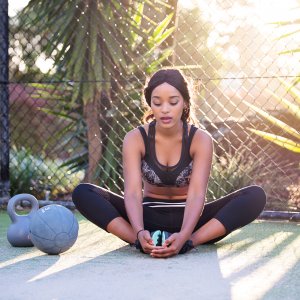 An excellent way to deal with pain is proper exercise. Proper exercise will help strengthen your muscles and assist with keeping your knees flexible, having the assistance of your other leg muscles in optimal. Keeping muscles like your quadriceps calves and hamstrings in excellent condition will help support your knees.
An excellent way to deal with pain is proper exercise. Proper exercise will help strengthen your muscles and assist with keeping your knees flexible, having the assistance of your other leg muscles in optimal. Keeping muscles like your quadriceps calves and hamstrings in excellent condition will help support your knees.
This will reduce the stress put on your joints and keep you moving along in the least amount of pain as possible. Keeping your muscles flexible with routinely stretching is also vital. Staying flexible will assisting with muscle healing and keep you toned and ready to move.
2. Choose the Right Shoes
Once the pain is there, that just how it is, along with diet and exercise, you can help the situation. But are there any other things that you can do? We say, yes! The shoes you wear are a big help. Wearing shoes that fit correctly and assist with your step is a good idea (More info on this in our blog How to choose the right shoes for running). Of your shoes hurt your feet, then you may want to stray away. Your knees come into contact with the ground through your feet. So, try making sure that your knees have the best experience as possible.
Having the right amount of cushioning will absorb most of the impact under your feet, assisting with the load on your knees. You can also try adding inserts to your boots. Having that extra layer can also improve the stability of your step and make it easier on your knees. 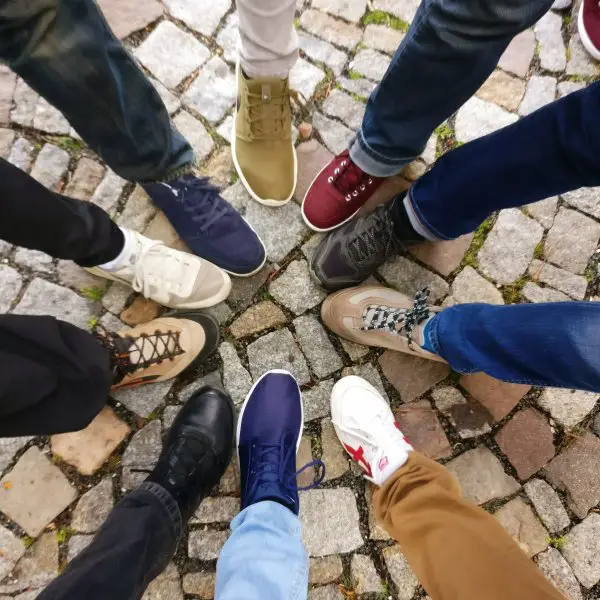
3. Try Carrying Only what is Necessary
Another good tip is the amount of weight you carry and how you carry it. The more weight you lug around equals more stress on your body. This ultimately means more pressure on your joints, as well. Try only carrying what necessary when you are taking those extended treks. Knowing how to pack your belongings and how to bring them is a more substantial deal than most people may think.
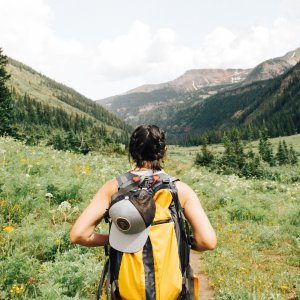 Another thing to think about is distributing the load evenly. This will assist with keeping your walking consistently and help keep your muscles and joints moving uniformly. Being able to control your body’s movements will significantly improve the chances of you not experiencing pain from overstraining your muscles.
Another thing to think about is distributing the load evenly. This will assist with keeping your walking consistently and help keep your muscles and joints moving uniformly. Being able to control your body’s movements will significantly improve the chances of you not experiencing pain from overstraining your muscles.
4. Find the Right Pace
An excellent strategy to have is taking your time with your treks. Not necessarily moving at a slower pace, but strategically taking each step to assure that you don’t hurt yourself can be a big game-changer. Most especially when trekking up and downhill. Moving on an inclined elevation puts a lot of pressure on your knees and other joints.
Making sure each step you take is going to be a good one will help. The quicker pace you make, the more pressure and strain you put on your muscles and joints. Try pacing yourself and make sure those inclines don’t get the better of you.
If you want to take it to the next level, there are more options for those who are willing to seek adventure. If you re looking for a great way to reduce stress on your joints and muscles, then trekking poles are a great option. Just by using trek poles, you can minimize the impact of each step by up to 25 percent.
The use of pols helps to redistribute the weight that you are carrying and assists with the control of the impact of the burden on your body. Not only that, but using the poles on an incline will assist with maintaining balance. Most importantly, if you’re on a rather long hike, these will help you keep moving and maintain the energy you need to keep moving.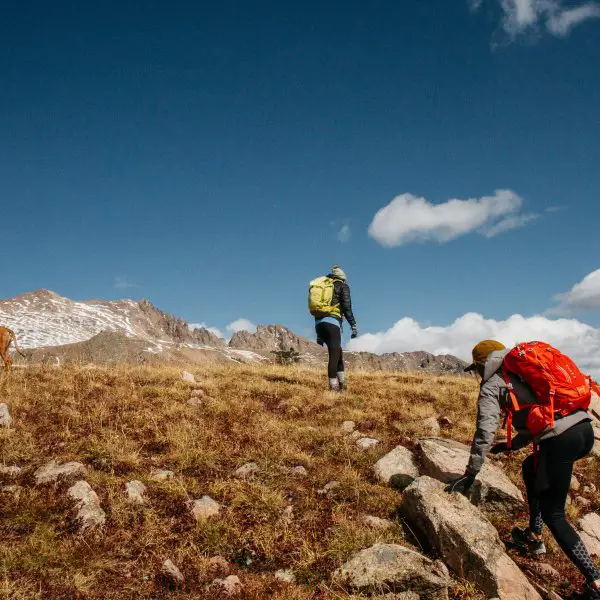
5. Try Wearing Knee Braces
Another thing you can do to assist with your hiking is to wear braces on your knees or even ankle braces. The assistance of the braces stabilizes the weak points of your body. The extra support can be the difference between a 10-mile hike and a 1-mile hike. It’s also a great way to deal with the pain when you have a great distance to cover.
Once the pain is there, then, unfortunately, there isn’t much you can do. Your body feels pain for a reason. But there are things you can do to prevent the pain.
Targeting the specific muscles that are causing you issues with stretching can help prepare your knees for a hike. This can also help prevent soreness and take that stiff feeling. Maintaining flexibility is going to help you keep moving with the least amount of pain as possible.
There you have it! Some of your best tips on how to deal with knee pain. When maintaining your body, there are no shortcuts to the result; we all know and want. Do you have any tips we didn’t mention? Comment below so our community can also stay well informed.










